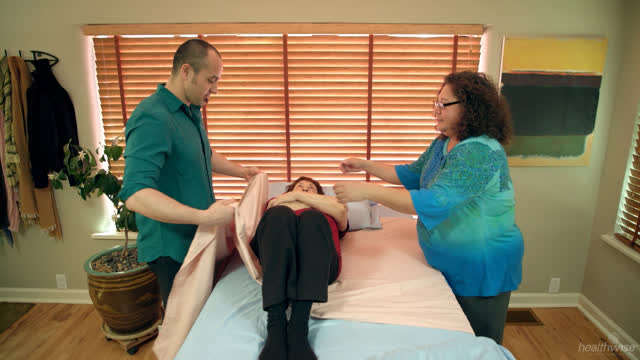Caregiving: Preventing Rashes in the Groin Area
Topic Overview
The groin area needs careful cleaning to prevent rashes and infections. Rashes are most likely to form in moist areas where skin touches skin, such as the folds of the groin, under the breasts, and on the stomach. For a larger-sized person, other areas of concern are the folds on the neck, arms, inner elbows, legs, behind the knees, and between the toes.
Daily cleaning can help prevent these problems. But it can be awkward or embarrassing for the person you’re caring for, especially if the person is of the opposite sex. Try to be relaxed. It may help make the person more comfortable. Let the person know that you’re making sure he or she doesn’t have rashes. Allow the person to do as much of the cleaning as possible. Give the person privacy if he or she is safe alone.
If you are helping, explain what you are doing. Only uncover the area that you’re cleaning. This helps maintain the person’s modesty.
Causes of rashes
Rashes in the groin and anal areas can be caused by several things. A yeast or bacterial infection can cause a rash. So can irritation from problems with bladder or bowel control. Protective underwear also can cause rashes or irritate the skin. Or a person may be allergic to the scents in the material.
People who have certain health problems, such as diabetes, may be at extra risk for infections because of a weakened ability to fight infections.
How to prevent rashes
To help prevent rashes:
- Change protective underwear as soon as possible after it is soiled or wet.
- Let the skin air-dry for 5 to 10 minutes before putting on a new pair of briefs. (But keep the person covered for modesty.)
- Clean the area daily, and check for rashes so that you can treat them as soon as they happen.
How to treat rashes
Treatment at home often helps rashes go away.
- Keep the skin dry.
- Check the briefs every 3 hours. Change if needed.
- Gently wash the groin and anal areas with warm water and a soft washcloth. Rinse well and dry completely. (See below to learn how to clean the groin area).
- Use a blow-dryer on a warm setting to get the area fully dry.
- If the person has had diarrhea, apply an ointment such as Desitin, Diaparene, A&D Ointment, or zinc oxide.
- Give more fluids to make the urine less concentrated. (Make sure the person doesn’t need to limit fluids for a medical reason.)
- Call the person’s doctor if the rash doesn’t get better or if signs of infection develop (such as increased pain, swelling, warmth, or redness).
How to clean the groin area
Let the person wash himself or herself as much as possible. But in some cases, you need to do the bathing.
To clean the groin:
- Wash your hands.
- Think about whether to wear gloves, especially if the person has been vomiting or has had diarrhea. If you decide to wear gloves, make sure that they fit snugly, but are not too tight.
- Give the person a washcloth with soap on it to clean himself or herself. Offer another warm, damp washcloth to rinse the soap.
- If you are doing the washing, be gentle. Don’t rub the skin.
- For men:
- Start at the tip of the penis and wash the tip in a circular motion. From the tip, clean away from the opening of the urethra.
- Wash the rest of the penis, moving down toward the scrotum. Rinse. Pat dry.
- If the man is uncircumcised, gently pull back the foreskin and clean underneath it. Don’t scrub the area. Rinse but don’t dry. Replace the foreskin.
- Clean the top and sides of the scrotum. Rinse and pat dry.
- Ask the man to turn on his side, or help turn him. Clean the bottom of the scrotum and the anal area. Rinse and pat dry.
- For women:
- Separate the labia and clean gently with the washcloth in one swipe from front to back.
- Turn the washcloth to use a new part of it, and clean in the same motion until the area is clean. Pat dry.
- Ask the woman to turn on her side, or help turn her. Clean the anal area from front to back. Pat dry.
- Don’t use moisturizers in these areas where skin touches skin.
Special concerns if the person has dementia
A person who has dementia may become confused or forget how to clean himself or herself. In a calming voice, explain one step at a time what the person should do. A person who has more advanced dementia will need you to do the cleaning. Explain what you are doing.
In some cases, the person may be upset or try to fight you. Don’t force the person to clean. Try again at another time. Pick a time when the person is the most rested and calm.
Current as of: April 1, 2019
Author: Healthwise Staff
Medical Review:Kathleen Romito MD – Family Medicine & Gayle E. Stauffer , RN – Registered Nurse
This information does not replace the advice of a doctor. Healthwise, Incorporated, disclaims any warranty or liability for your use of this information. Your use of this information means that you agree to the Terms of Use. Learn how we develop our content.




